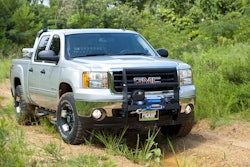Liability Inventory
The term “liability” is generally not a cheerful one. It conjures up images of legal proceedings such as lawsuits or, at the very least, large premiums paid to insurance companies. As a contractor, I’m sure you are familiar with the need for liability insurance.
But have you stepped back and looked at the big picture in regard to liability, including insurance and other ways you can help manage your company’s risk?
Now might be a good time to take a quick inventory of liability issues in relation to your business.
Insurance
Liability insurance has become a necessity – due to our “sue happy” society and also because it is an actual requirement for many jobs.
Many states mandate basic liability insurance for all contractors; customers institute insurance requirements; institutions providing funding for a job have liability insurance thresholds and depending on the job size, the amount of coverage may be dictated as well.
Liability insurance is the financial protection that contractors need in the event of a million different things that could go wrong on the job. As careful as you may be, and as much training as you may give your crew, there’s no way to cover everything that could come up.
Find yourself a good insurance agent and make sure you understand the exact coverage you are purchasing, as it will vary from policy to policy.
Any time you pay insurance premiums, make sure you are buying the coverage you need. Remember, don’t base your insurance decisions solely on price, because the lowest cost may not provide enough protection.
Here are a few of the basics that you should understand:
General Liability – General liability insurance covers those things that you just cannot control. It typically protects against lawsuits stemming from maiming or death, damage to property, equipment failure, theft, fires and explosions and contractual liabilities.
Umbrella Liability Coverage – If you are a large contractor working on large construction sites, you may want to purchase umbrella liability coverage.
General liability coverage usually has a maximum payout limitation so it may not cover all of your liability. Umbrella liability coverage is a safeguard in case your general liability insurance coverage is not sufficient.
Again, your insurance agent should be able to help you determine whether you need this type of coverage or not.
Exclusions – Another important reminder when it comes to insurance policies – make sure you check out the exclusions listed in the terms of your policy. It is critical that you understand what your insurance policy will cover and what it will not cover.
To make up for these exclusions, you can often purchase riders or other types of insurance for a specific exclusion.
Reading insurance policies is not necessarily a pleasant pastime, but you don’t want to be paying out premiums and then find out that you weren’t even covered for the eventuality you thought you were protected from.
So read your policy, ask your agent questions and do your homework – it’ll be worth it.
Risk Management
Buying insurance is a good way to cover your company, especially for those things over which you have no control – but there are some areas that you can manage, which is a great opportunity to reduce your risk of ever needing to use that policy.
Following are a few ideas for managing the liability that you do have some control over.
Training – A solid program for training your employees in proper use of equipment and safety procedures is essential. Even your long-term employees need ongoing safety training.
Regular safety meetings and a continual review of safety procedures is valuable, for new employees and old-timers.
It’s well worth taking company time to host a safety breakfast and make sure all your crew is on the same page as far as safety goes.
Motivating Employees – Providing safety equipment and holding regular safety meetings are great, but offering bonuses and/or other rewards for safety goals can be an effective way to increase employee participation.
A few ideas for motivating your folks could include:
• specific bonuses for meeting safety goals for the month, quarter or year;
• safety barbecues to celebrate milestones as goals are reached;
• awards such as baseball caps, T-shirts or jackets with the company logo for reaching safety goals.
Maintenance – Keeping your vehicles and equipment in top, working order is another good way to manage your company’s risk.
Equipment that is properly maintained with all parts in working order, warning stickers replaced and safety guards installed will reduce workplace accidents. Keep this in mind when considering spending money on new parts and equipment, because it’s a whole lot cheaper than dealing with a lawsuit or accident.
Survey the Site – When you are starting a new project, take the time to review the jobsite and identify any potential hazards that may occur while performing the job.
Overhead hazards, steep terrain, unstable vegetation and underground utilities are a few of the hazards to consider.
Address these issues before your crew even starts. The time spent up front could save you a lot of headache later on.
Nobody wants to be involved in a liability claim where personal injury, property damage or losses are incurred.
So it is worth your while to make managing your company’s risks a top, ongoing priority and to ensure that you have the appropriate level of liability insurance coverage, in the event that you do need it.
About the author: Robin Walton has been a licensed contractor for more than 20 years and has 16 years of financial accounting and systems experience. With a degree in accounting/economics and hands-on construction experience, she understands the day-to-day business of contractors and landscapers.






